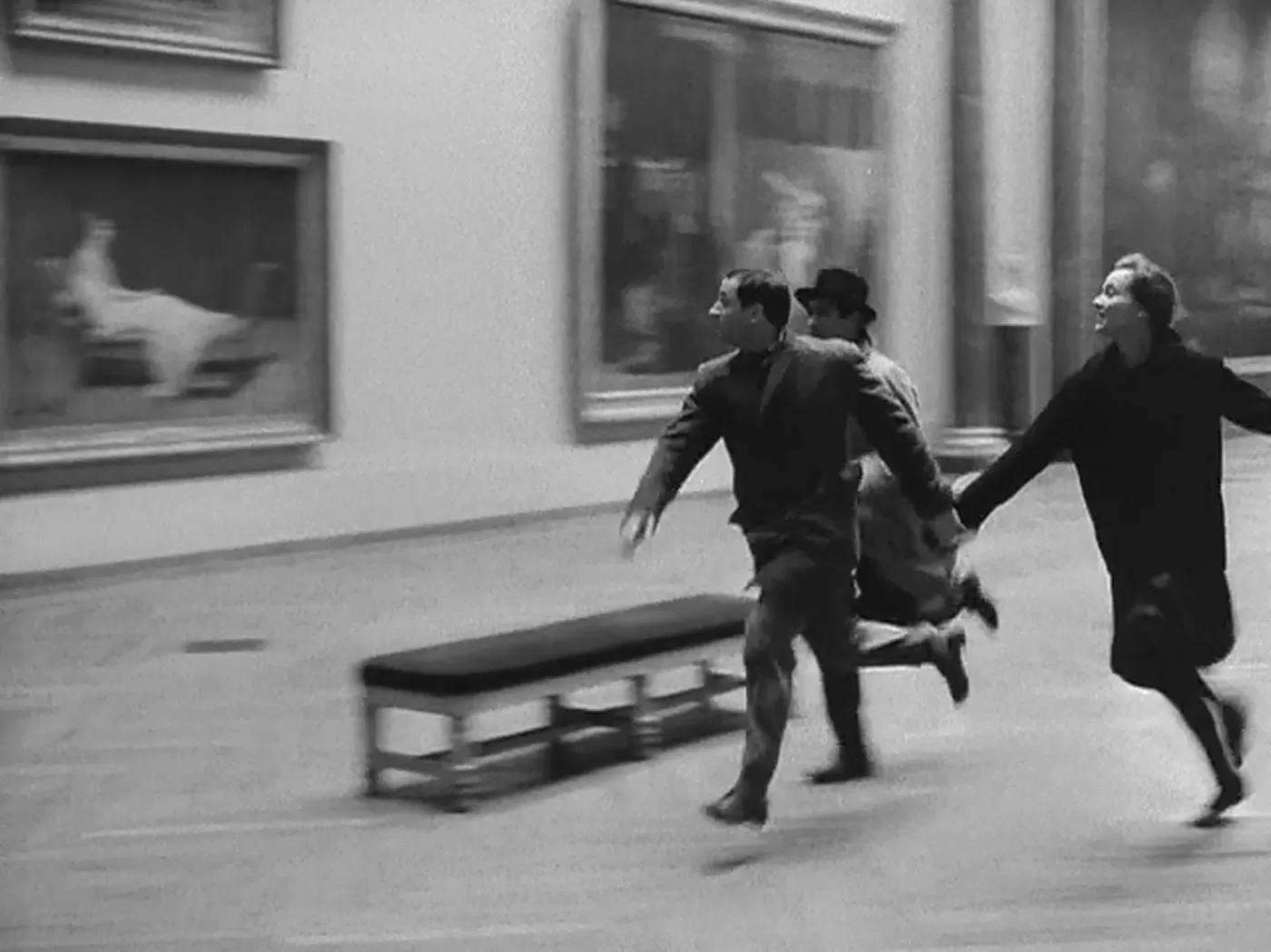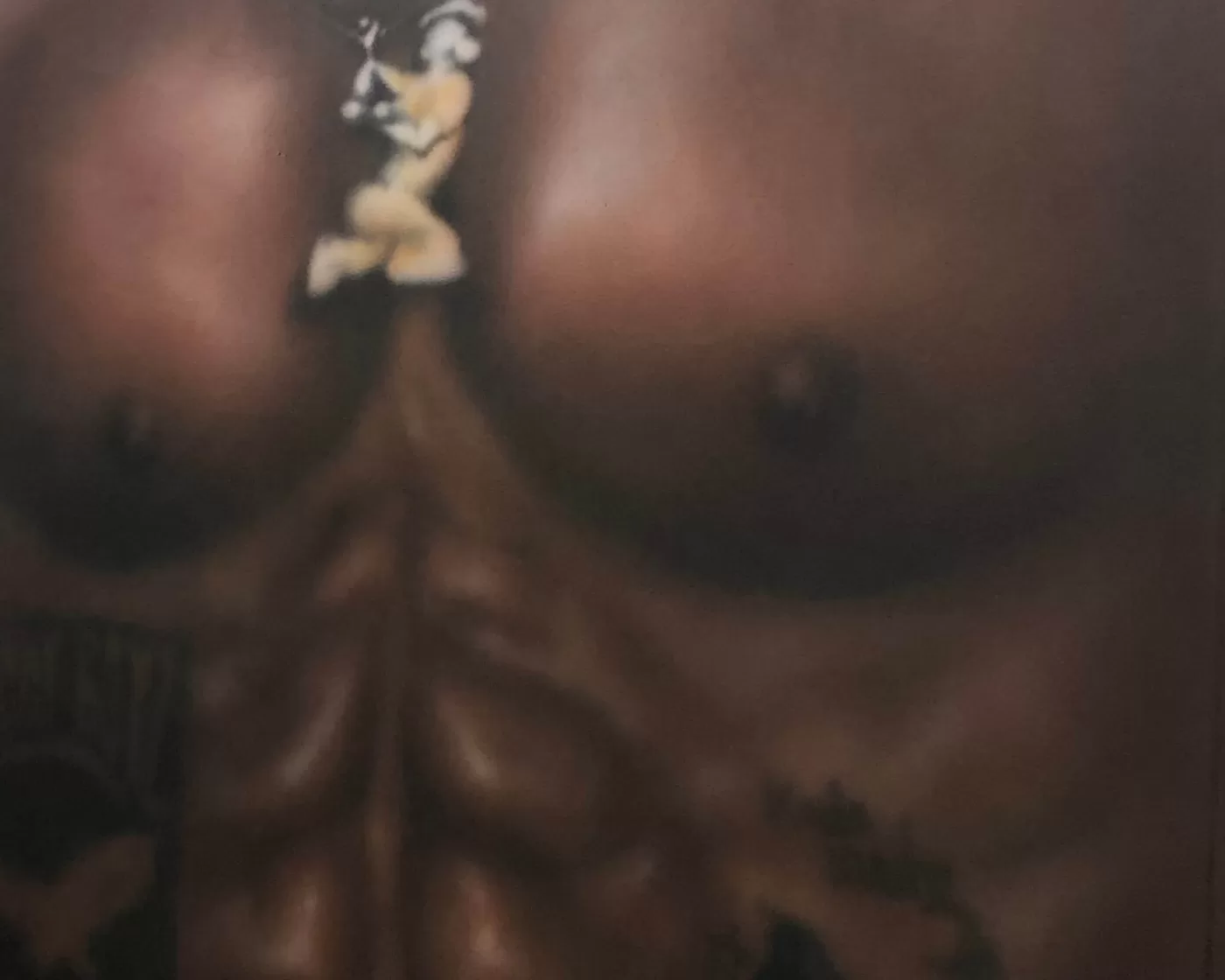Looking for hot, young artists in your area? Here’s how to find them
8 min read
Every year, the art world gets a little larger. It’s never been easier, and more difficult, to find new artists. With so much to see, where do you begin? Here’s how to find new artists

Jean-Luc Godard, Bande à part, 1964
Every year, the art world gets a little larger. It’s never been easier, and more difficult, to find new artists. With so much to see, where do you begin? How do you know what you’re looking at is good? And how to find new artists before the galleries do?
Discovering new artists is a little like dating. You have to know where to hang out, what questions to ask, and you have to accept that it takes time, effort, and hopefully not too much money. You might have to drag yourself halfway across the city, but in the end, it’ll be worth it.
First things first, some quick advice: avoid Camden market, NFT ‘artists’ aren’t artists and this is not a foolproof guide.

Leonardo Devito
The Internet
If your instinct when faced with any kind of question is to pull out your phone, then yeah, you’d be right ,the quickest way to find new artists is online – however, it’s not always the easiest.
Most artists are on social media. Perhaps understandably, the photo-sharing platform Instagram is very popular with artists. In fact, some artists make it their only online platform. So, it’s worth checking there if you can’t find an official or up-to-date website. Once you’ve found an artist whose work you like, take a look at who they’re following. By doing this, you can find a network of artists who share your taste. Then take a look at who follows them, it’s a good sign if they’re followed by any big names, but it’s not a bad sign if they’re not – they might just be undiscovered.
There are also websites that aggregate artists’ work. BOOOOOOOM features artist submissions ranging from illustration and photography to painting and CGI. Contemporary Art Daily documents exhibitions around the world and is an easy way to be introduced to artists you might not have heard of.
Degree Shows
Go to the source. Degree shows are one of the best places to find new, young, up-and-coming artists. Each university is different, but they all occur at the end of the academic year, any time between June and July. There’s usually one show for BA graduates and one for MA graduates. Each department – illustration, fine art, drawing, photography and so on – usually organises its own section. Degree shows are open to the public, though you might need to book a time slot, they’re free to attend and you don’t need to be invited – just wander in.
Degree shows are great opportunities to see a lot of art, very quickly, and to meet the artists themselves – they’re usually on hand to talk about their work. Most of these artists won’t be represented by galleries – yet. Gallerists always pay close attention to degree shows and snap up artists and artworks as soon as possible. Some, especially the MAs, may have already held exhibitions at galleries. Degree shows are good barometers for emerging market trends, so if you see something you like, move fast.
In London, the big shows are at The Royal Academy Schools, The Slade, Goldsmiths and the colleges of the University of the Arts London: including Camberwell, London College of Communication, and Chelsea College of Arts.
Once you’ve completed the degree shows, you could graduate to group shows such as London Open and Bloomberg New Contemporaries, and the RA Summer show (eek) where you can uncover the best new talent of the year.

Henry Gibbs at Central Saint Martins
Open Studios
Just like degree shows, open studios are events whereby artists’ studios are open to members of the public. These shows might be as small as a single studio, organised by the artist themselves, or they might be larger exhibitions organised by studio managers. At open studios, you’re able to see a variety of artists under one roof, with the artists on hand to talk about their practice.
Open studios are casual affairs. You might have artists or studio staff giving tours, but there’s no need for tickets and usually no entry fee, though donations are often appreciated. If you’re at a loss, then chat to the studio manager. They know the building and the artists inside and out. If you’re looking to buy some art, then let them know and give them a budget. They’ll be able to point you in the right direction. Unmissable open studios in London include: APT, Thames-Side Studios, SET, Sarabande Foundation, V.O. Curations, and Art Hub Studios. There are no set dates, but they’re usually organised over weekends in the summer.
Bars & Cafés
At the end of the day, artists need to let their hair down. If you’re looking for an even more casual encounter then find out which bars and cafés they frequent. Throughout history, there have been many venues that have become known as artistic hangouts: back in 19th-century Paris, you’d find artists at the Dead Rat. In 1960s London, the Colony Room Club and The French House were the favourites of Lucien Freud and Francis Bacon. In the 1990s, the now-demolished Hero of Switzerland in Loughborough Junction was the meeting place of many Young British Artists.
Interrupting an artist while they’re drinking might be a bigger faux pas than interrupting them while they’re working. So, if you’re keen to meet them, just take your time. While you’re waiting, imbibe the artistic atmosphere. Eventually, you’ll be able to introduce yourself, and they probably won’t turn down the offer of a free drink.
Art hangouts: The French House remains a popular central London hangout for artists, around the corner on Greek Street there’s the New Evaristo Club (AKA Trisha’s), there’s also the Plimsoll in Finchley Park, the Hermit’s Cave near Camberwell College of Arts, and the Amersham Arms near Goldsmiths.

Leo Costelloe at Photobookcafe
Dating Apps
Dating apps are great for meeting people, so naturally they’re a great way to find artists. And if you’re wondering if that latest match is an artist… don’t worry, they’ll have already mentioned it. Here’s a few terrible chat-up lines to start you off: “Are you an artist? ‘cause you’re drawing me in”, “Aren’t you the model from my life drawing class?”, “I would take you to a gallery, but they said not to touch the masterpieces.”
Prizes
If you really don’t know where to begin looking for new artists, then let others do the hard work for you. There’s a large and growing number of awards for artists, recognising all sorts of achievements at all points of artists’ careers. If you have an idea of what you’re interested in: painting, sculpture, young artists, established artists, or specific demographics, then just find the prize and follow the announcements.
Everyone pays attention to prizes, especially gallerists. By following them you’ll have a heads-up on which artists are about to be big. Of course, the winners will get most of the attention. But it’s well worth looking at the shortlist, and even the submissions. You might find artists you prefer. And don’t forget to read around, the press might run interviews or profiles on the winners and nominees. After the awards themselves, there are the ceremonies and parties. If you can get yourself an invite, then you’ll have a great opportunity to mix with the artists.
Major art prizes include: the Max Mara Art Prize for Women, Future Generation Art Prize the Loewe Craft Prize, and the John Moores Painting Prize.

Mattia Guarnera-MacCarthy at Harlesden High Street
Word of Mouth
Don’t forget to ask around. If you see an artwork you like, ask who made it. When you meet artists, ask them who they’re interested in. The art world is large, but tightly knit. People know people, and they might be able to give you some names you haven’t heard, and they might even be able to introduce you.
plaster magazine dot com
Still looking? Take a look at the creatives we’ve highlighted on the Plaster Radar and our staff picks.